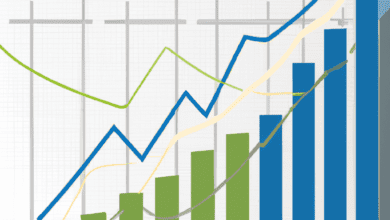The Impact of Central Bank Policies on Currency Valuation: Navigating Forex, Stablecoins, and Global Trends

In today's interconnected world, central bank policies play a pivotal role in shaping the landscape of currency valuation and influencing the dynamics of global currency markets. As central banks navigate complex economic challenges, their monetary policies can lead to significant fluctuations in currencies, impacting everything from international trade to investment strategies. Understanding how these policies affect currency trading, particularly in the forex market, is essential for investors and businesses alike. In this article, we will explore the intricate relationship between central bank policies and currency values, delving into the influence of monetary strategies on forex trading and currency pairs. We will also analyze emerging currency trends, including stablecoins and Central Bank Digital Currencies (CBDCs), and their implications for currency hedging, depreciation, and appreciation in an increasingly digital economy. By examining these critical aspects, we aim to equip readers with the knowledge and tools necessary to navigate the complexities of currency trading and make informed decisions in a rapidly evolving financial landscape.
- 1. Understanding Central Bank Policies and Their Impact on Currency Valuation
- 2. The Influence of Monetary Policies on Forex Trading and Currency Pairs
- 3. Analyzing Currency Trends: From Stablecoins to CBDCs in Global Currency Markets
1. Understanding Central Bank Policies and Their Impact on Currency Valuation
Central bank policies are fundamental in determining the value of currencies in the global currency markets. These institutions, responsible for managing a nation’s monetary policy, influence currency valuation through various mechanisms. By adjusting interest rates, controlling the money supply, and implementing quantitative easing, central banks directly impact inflation rates and economic stability, which in turn affect the strength of fiat currencies.
Understanding how central bank policies function is crucial for those involved in currency trading. For instance, when a central bank raises interest rates, it typically leads to currency appreciation. Higher rates attract foreign investment, increasing demand for the currency in currency pairs. Conversely, lowering interest rates can lead to currency depreciation, as it may prompt investors to seek better returns elsewhere.
Monetary policy decisions also play a vital role in currency hedging and arbitrage strategies. Traders closely monitor these policies to anticipate currency trends, enabling them to exploit discrepancies in currency values across different markets. This can be particularly significant in emerging market currencies, where central bank interventions can lead to sudden shifts in currency valuation.
In recent years, the emergence of digital currencies, including stablecoins and Central Bank Digital Currencies (CBDCs), has added a new dimension to how central bank policies impact currency values. These digital currencies can offer more efficient cross-border payments and can be pegged to fiat currencies, influencing exchange rates and international trade dynamics.
Additionally, currency reserves held by central banks play a crucial role in stabilizing currencies during periods of volatility. When a currency faces depreciation, central banks may intervene by using their reserves to support the currency's value, thus preventing excessive fluctuations that could destabilize the economy.
In summary, central bank policies are pivotal in shaping currency valuation, influencing everything from currency conversion rates to long-term strategies in currency futures and ETFs. As global economic conditions evolve, understanding the nuances of these policies will remain essential for traders and investors navigating the complexities of the forex market.
2. The Influence of Monetary Policies on Forex Trading and Currency Pairs
Monetary policies play a crucial role in shaping the landscape of forex trading and significantly impact currency pairs. Central banks, by adjusting interest rates and implementing quantitative easing, influence the valuation of fiat currencies, which in turn affects how traders approach currency trading. When central banks signal a tightening of monetary policy, for instance, it often leads to currency appreciation as higher interest rates attract foreign investment. Conversely, a decrease in interest rates can result in currency depreciation, creating opportunities for currency arbitrage.
In the realm of forex, traders closely monitor central bank policies to anticipate currency trends. For example, during periods of inflation, central banks may raise interest rates to stabilize prices, which can strengthen the domestic currency against emerging market currencies. This dynamic is particularly relevant in cross-border payments, where fluctuations in currency values can impact costs and profitability for businesses engaged in international trade.
Moreover, the rise of digital currencies and stablecoins is influencing traditional currency markets. As central banks explore Central Bank Digital Currencies (CBDCs), the landscape of currency conversion and currency reserves is evolving. Forex traders are starting to incorporate these digital assets into their currency strategies, recognizing their potential to affect liquidity and volatility in global currency markets.
Currency hedging is another critical aspect influenced by monetary policies. Traders often use currency futures and currency ETFs to mitigate risks associated with adverse currency movements triggered by shifts in central bank policies. Understanding these mechanisms allows traders to better navigate the complexities of forex trading and capitalize on opportunities in currency pairs.
In summary, the interplay between central bank policies and currency valuation is a fundamental element of forex trading, impacting everything from currency appreciation and depreciation to strategies for managing risk in an ever-changing global market. As the landscape continues to evolve with the introduction of digital currencies, traders must remain vigilant to adapt their approaches in response to shifting monetary frameworks and emerging currency trends.
3. Analyzing Currency Trends: From Stablecoins to CBDCs in Global Currency Markets
The landscape of global currency markets is rapidly evolving, influenced by a variety of factors including central bank policies, technological advancements, and shifts in investor behavior. One of the most notable trends in recent years has been the rise of stablecoins and Central Bank Digital Currencies (CBDCs), which are reshaping how we think about currency valuation and trading.
Stablecoins are cryptocurrencies designed to maintain a stable value against a fiat currency, making them attractive for currency trading and reducing volatility often associated with traditional cryptocurrencies. Their pegged nature allows for easier currency conversion and provides a reliable medium for cross-border payments. As international trade becomes increasingly digital, stablecoins are gaining traction in both emerging market currencies and established economies.
On the other end of the spectrum, CBDCs represent a proactive approach by central banks to digitize fiat currencies. Unlike cryptocurrencies, CBDCs are fully regulated and backed by central banks, which can help mitigate currency depreciation during periods of inflation. They offer potential advantages for currency hedging and could enhance the efficiency of currency futures and currency ETFs by streamlining transactions and reducing costs in global currency markets.
However, the introduction of these digital currencies also raises concerns about currency wars and the implications for fixed exchange rates and currency pegs. As nations adopt different approaches to digital currencies, disparities may emerge that influence currency trends and affect the valuation of traditional fiat currencies.
In this dynamic environment, currency strategies must adapt to incorporate the influence of stablecoins and CBDCs. Investors and traders need to stay informed about these developments, particularly how they can impact currency pairs and overall forex trading strategies. Whether through currency arbitrage or speculative investments in digital currencies, understanding the interplay between traditional currencies and their digital counterparts will be crucial for success in the evolving currency markets.
As we look ahead, monitoring these trends will not only inform individual investment decisions but also contribute to a broader understanding of how monetary policies shape the future of currencies in a globalized economy.
In conclusion, central bank policies play a pivotal role in shaping currency values and influencing the dynamics of global currency markets. As we have explored, the interplay between monetary policies and currency valuation directly impacts forex trading, affecting currency pairs and trading strategies employed by investors. The rise of digital currencies, including stablecoins and Central Bank Digital Currencies (CBDCs), signifies a shift in how currencies are perceived and utilized in international trade and cross-border payments.
With the ongoing evolution of currency trends, traders must remain vigilant about the implications of currency depreciation and appreciation on their investments. Understanding the mechanisms of currency hedging and arbitrage can provide valuable advantages in navigating the complexities of currency trading. Furthermore, as emerging market currencies continue to gain traction, adapting to these changes will be essential for successful currency strategies.
As we look ahead, the potential for currency futures and ETFs to offer innovative solutions for managing currency risk remains promising. In an increasingly interconnected world, monitoring central bank policies and their effects on fiat currencies will be crucial for anyone engaged in tourism and currencies or involved in currency conversion and trading. By staying informed and agile, traders and investors can better position themselves to capitalize on the ongoing shifts in the global currency landscape.
References:
– (Include all relevant citations here)





